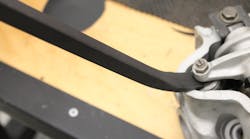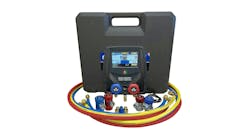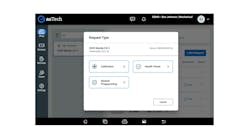A technician uses a variety of tools to complete each job. For some jobs more tools are used, and for others fewer, but overall the number of tools a technician is using comes down to what tools they have in their toolboxes and what those tools can do. If a technician owns a variety of products that have the ability to be used for a multitude of applications, that technician may be able to use fewer tools on each job they perform and even increase output.
Multiuse tools provide technicians not only the chance to use fewer tools on the job, but they tend to be more cost-efficient, safer, and save time. It is in a technician’s best interest to keep at least a few multiuse tools around, such as pry bars, screwdrivers, sockets, and wrenches in order to be as efficient as possible.
Why use multiuse tools?
When working a variety of jobs, it makes sense to have a variety of tools. But what if only a few tools were needed to finish a job instead of a whole toolbox? Multiuse tools can provide several benefits to technicians.
Cost efficiency
Can one tool do the job of three? If so, why buy those other three tools? Buying those other tools would not only be redundant, but it could also get pricy. Another factor to keep in mind is, would the redundant tool even get used or would it sit in the technician’s toolbox?
“You're not buying [multiuse] a tool for a specific application,” says Max Knoell, senior vice president of Lang Tools. “So, if there [are] fifty things this tool can work on, you don't have to buy fifty separate tools.”
Safety
Safety is an important factor for every technician. No one wants to see someone get hurt on the job, so any tool or protective gear that could help keep technicians safe should be utilized. Multiuse tools can improve safety by allowing the user to focus on the task at hand without having to pause to switch tools.
“Depending on the type of repair being done, it could be safer for the technician not to have to stop in the middle of what they are doing [and] instead simply utilize the tool they already have in hand,” says Eric Mills, vice president of sales and marketing for Mayhew Tools.
Value
The value a tool brings to a technician depends on what that tool can do for them. The more frequently a technician can use that tool, the more valuable it is to have in their toolbox.
“Tools are expensive, so finding one tool that can help a technician make money on multiple jobs greatly increases that tool’s value,” explains Justin Fisette, senior product specialist for Bosch. “Multiuse tools also can help a technician pay for that tool faster, completing more jobs in a shorter period of time because of the versatility of the tool.”
Time efficiency
Time is money. The more time a technician spends on one job, the less jobs they’ll be able to complete in a day. Multiuse tools can cut down on wasted time while performing a repair because the technician may not need to search for an additional tool if a multiuse tool can be utilized instead.
What to keep in your toolbox
There are certain items every technician keeps in their toolbox, and when it comes to multiuse tools there are a variety for technicians to choose from. From pry bars to wrenches and everything in between, it can be difficult to know what’s worthwhile.
For example, pry bars are a common and essential multifunctional tool. With their ability to pry, lift, and manipulate the components of a vehicle, pry bars offer a wide array of uses for many repair jobs.
OTC offers a Heavy Duty Indexable, Extending Pry Bar, No. 7177.
“The bar extends from 34” to 53” in 31 different preset lengths to get the most leverage possible in heavy duty prying applications,” says Bosch’s Fisette. “Technicians can use this bar to push, pull, move, separate, lift, or otherwise manipulate parts of a vehicle as needed to complete a job.”
Much like OTC, Mayhew Tools also offers pry bars, but with a little bit of a twist. The curved end of Mayhew’s Dominator 3-piece Curved Pry Bar Set provides additional leverage while its chiseled tip helps reduce slippage, explains Mayhew Tools’ Mills.
Aside from the pry bar, Fisette also lists a c-frame, a universal 2/3 jaw puller, and slide hammers as multiuse tools worthy of a spot in the toolbox.
“A good c-frame can be used as a ball joint press, u-joint press, wheel stud removal and installation tool, and more,” Fisette says. “Universal 2/3 jaw pullers can pull gears, hubs, bearings, and more.” “Different sized slide hammers can also pull hubs, bearings, axles, gears, pilot bearings, and even dents with the right adapters.”
Tool trends
As the new decade begins, we see some trends in tools that will never change, like a technician’s constant search for the highest quality products. But we also see new trends emerge. Versatility and adaptability are becoming more important in a tool’s design. Technicians are looking for tools they can do more with, and the ability to do more with the tools they already have.
“A multiuse tool is great and made even better when it works in conjunction with what a technician already owns,” Fisette says. “A slide hammer is a great tool, made even better when the company making it has accessories with the same threads, so technicians can expand the tool’s use beyond their initial purchase.”
Additional trends include tools with more ergonomic designs and tools being made from sturdier, more reliable materials. Regardless, as the trends come and go, technicians will still be looking for the same features in tools – durability, quality, and value.
Many multiuse tools possess those qualities, as well as the ability to be used for more than one purpose, making them that much more essential for technicians to own. It’s not about the tools a technician has, it’s about what the technicians can do with those tools.




